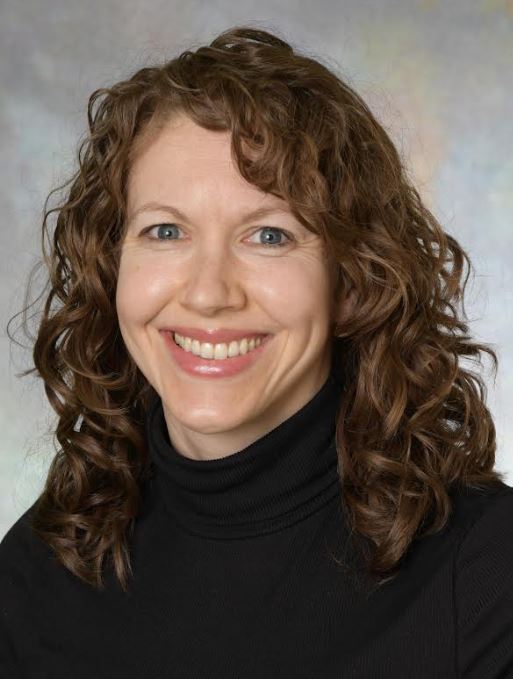Brain Body Mind Lab Members
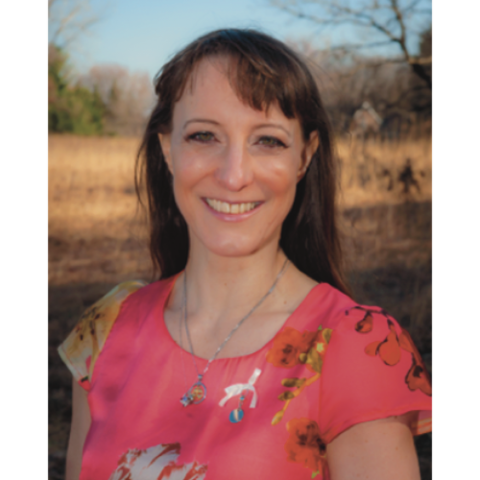
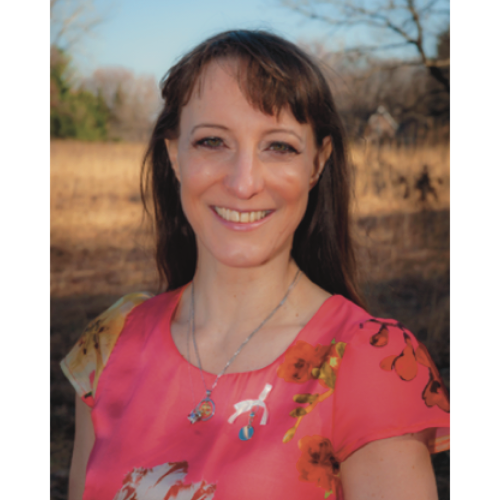
Research Summary
Research Summary/Interests
Dr. Ann Van de Winckel, PhD, MSPT, PT is Assistant Professor at the Medical School of the University of Minnesota in the Department of Rehabilitation Medicine (Division of Physical Therapy, and Division of Rehabilitation Science). She is also the Director of the Brain Body Mind Lab.
The main research focus of her lab is to investigate the brain mechanisms of body awareness in physical therapy (cognitive multisensory rehabilitation or CMR) as well as mind and body approaches (such as Qigong) to improve health and daily life function in people with chronic neurological conditions and/or chronic pain. Her lab made a crucial discovery that focus on body awareness using CMR led to restoration of the disrupted parietal operculum network in adults with chronic stroke, in parallel with long-lasting improved upper limb sensorimotor function. Her studies of CMR on reducing neuropathic pain and improving sensorimotor function in other neurological conditions such as adults with spinal cord injury have led to long-lasting significant neuropathic pain reduction and improved sensation and movement. Those sensorimotor improvements were paired with significant improvements in brain function. Since mind and body approaches have been shown to improve body awareness and reduce pain, she also investigated the effect of Qigong on body awareness-related brain functions in adults with chronic low back pain and adults with neurological conditions such as adults with spinal cord injury with and without neuropathic pain with significant lasting reduction in chronic pain. Her long-term goals are to investigate the interactions between body awareness, physical impairments, and psychological factors such as mindset (brain-body-mind interactions) to facilitate development and implementation of new rehabilitation strategies that attend to these factors to provide pain relief and increased health and functional recovery in adults with chronic neurological conditions and/or chronic pain.
Research Funding Grant
HAPPINESS: cHAnging the Perceived Pain INtensity in divErSe populations with Spinal cord injury: A feasibility study
- Funding: NIH (National Center for Complementary and Integrative Health, NCCIH)
- Grant number: R34AT012369
- Timeline: 02/23/2024-02/22/2027
- Role: Principal Investigator
Remotely delivered Cognitive Multisensory Rehabilitation for Sensory and Motor Recovery after Spinal Cord Injury
- Funding: Minnesota Spinal Cord Injury and Traumatic Brain Injury Research Grant Program 2022
- Timeline: 10/17/2022-6/30/2025
- Role: Principal Investigator
A Clinical Trial of Cognitive Multisensory Rehabilitation for Sensory and Motor Recovery in Adults with Spinal Cord Injury
- Funding: Paralyzed Veterans of America
- Timeline: 1/1/2022-12/31/2023
- Role: Principal Investigator
Minnesota Regional Spinal Cord Injury Model System
- Funding: NIDILRR Department of Health and Human Services
- Timeline: 9/1/2021-8/31/2025
- Role: Co-Investigator
Identifying brain mechanisms of cognitive multisensory rehabilitation for neuropathic pain relief in adults with spinal cord injury
- Funding: Academic Investment Research Program (AIRP)
- Timeline: 9/1/2020-8/31/2022
- Role: Co-Investigator
Knowledge Translation to Promote Patient-Centered Care through Use of Standardized Assessments
- Funding: National Institute on Disability, Independent Living, and Rehabilitation Research
- Timeline: 10/1/2020-9/30/2025
- Role: Advisory Committee
A Randomized Pilot Study Assessing Vagus Nerve Stimulation (VNS) During Rehabilitation for Improved Upper Limb Motor Function after Stroke (MicroTransponder's Vivistim System)
- Funding: Microtransponder Inc. (Study MT-St-02 Stroke)
- Timeline: 12/1/2014-3/31/2022
- Role: Principal Investigator (8/18/2017-3/31/2022); Co-PI (7/7/2017-8/17/2017)
Feasibility of identifying brain mechanisms of Qigong and behavioral outcomes after Qigong practice in people with chronic low back pain
- Funding: 2019 Clinical Translational Research Services (CTRS) Pilot Funding Program
- Timeline: 9/1/19 - 2/28/2022
- Role: Principal Investigator
Publications
2024
- Huang Q, Elangovan N, Zhang M, Van de Winckel A, Konczak J. Robot-aided assessment and associated brain lesions of impaired ankle proprioception in chronic stroke. J Neuroeng Rehabil. 2024 Jun 24;21(1):109. doi: 10.1186/s12984-024-01396-9. PMID: 38915064; PMCID: PMC11194987.
- Zernitz M, Rizzello C, Rigoni M, Van de Winckel A. Case Report: Phantom limb pain relief after cognitive multisensory rehabilitation. Front Pain Res (Lausanne). 2024;5:1374141. doi: 10.3389/fpain.2024.1374141. eCollection 2024. PubMed PMID: 38726352; PubMed Central PMCID: PMC11079144.
2023
- Zhang JJ, Van de Winckel A. Editorial: Insights in interventions for rehabilitation: 2023. Front Rehabil Sci. 2023 Nov 17;4:1326850. doi: 10.3389/fresc.2023.1326850. PMID: 38046522; PMCID: PMC10691531.
- Van de Winckel A, Carpentier S, Deng W, Zhang L, Battaglino R, Morse L. Using remotely delivered Spring Forest Qigong™ to reduce neuropathic pain in adults with spinal cord injury: protocol of a quasi-experimental feasibility clinical trial. Pilot Feasibility Stud. 2023 Aug 22;9(1):145. doi: 10.1186/s40814-023-01374-3. PMID: 37608389; PMCID: PMC10464017.
- Kimberley TJ, Prudente CN, Engineer ND, Dickie DA, Bisson TA, Van de Winckel A. Vagus Nerve Stimulation Paired With Mobility Training in Chronic Ischemic Stroke: A Case Report. Phys Ther. 2023 Dec 6;103(12):pzad097. doi: 10.1093/ptj/pzad097. PMID: 37669130; PMCID: PMC10748760.
- Feng S, McDaniel S, Van de Winckel A. Finding functionality: Rasch analysis of the Functionality Appreciation Scale in community-dwelling adults in the US. Front Rehabil Sci. 2023 Oct 2;4:1222892. doi: 10.3389/fresc.2023.1222892. PMID: 37849959; PMCID: PMC10577199.
- Van de Winckel A, Carpentier ST, Deng W, Zhang L, Philippus A, Battaglino R, Morse LR. Feasibility of using remotely delivered Spring Forest Qigong to reduce neuropathic pain in adults with spinal cord injury: a pilot study. Front Physiol. 2023 Aug 31;14:1222616. doi: 10.3389/fphys.2023.1222616. PMID: 37719467; PMCID: PMC10500194.
- Van de Winckel A, Zhang L, Hendrickson T, Lim KO, Mueller BA, Philippus A, Monden KR, Oh J, Huang Q, Ruen J, Konczak J, Evans R, Bronfort G. Identifying body awareness-related brain network changes after Spring Forest Qigong™ practice or P.Volve low-intensity exercise in adults with chronic low back pain: a feasibility Phase I Randomized Clinical Trial. medRxiv [Preprint]. 2023 Feb 14:2023.02.11.23285808. doi: 10.1101/2023.02.11.23285808. PMID: 36824785; PMCID: PMC9949220.
- Van de Winckel A, Carpentier ST, Deng W, Bottale S, Zhang L, Hendrickson T, Linnman C, Lim KO, Mueller BA, Philippus A, Monden KR, Wudlick R, Battaglino R, Morse LR. Identifying Body Awareness-Related Brain Network Changes after Cognitive Multisensory Rehabilitation for Neuropathic Pain Relief in Adults with Spinal Cord Injury: Delayed Treatment arm Phase I Randomized Controlled Trial. medRxiv [Preprint]. 2023 Feb 10:2023.02.09.23285713. doi: 10.1101/2023.02.09.23285713. PMID: 36798345; PMCID: PMC9934787.
- Deng W, Carpentier S, Blackwood J, Van de Winckel A. Rasch validation of the Warwick-Edinburgh Mental Well-Being Scale (WEMWBS) in community-dwelling adults. BMC Psychol. 2023 Feb 17;11(1):48. doi: 10.1186/s40359-023-01058-w. PMID: 36803574; PMCID: PMC9936469.
- Deng W, Carpentier S, Van de Winckel A. Physical body experiences questionnaire simplified for active aging (PBE-QAG): Rasch validation. PLoS One. 2023 Feb 10;18(2):e0280198. doi: 10.1371/journal.pone.0280198. PMID: 36763606; PMCID: PMC9916545.
- Francisco GE, Engineer ND, Dawson J, Kimberley TJ, Cramer SC, Prudente CN, Pierce D, Tarver WB, Hinds RHA, Van de Winckel A, Yozbatiran N. Vagus Nerve Stimulation Paired With Upper-Limb Rehabilitation After Stroke: 2- and 3-Year Follow-up From the Pilot Study. Arch Phys Med Rehabil. 2023 Mar 30:S0003-9993(23)00147-8. doi: 10.1016/j.apmr.2023.02.012. PMID: 37001842.
- Blackwood J, Carpentier S, Deng W, Van de Winckel A. Preliminary Rasch analysis of the multidimensional assessment of interoceptive awareness in adults with stroke. PLoS One. 2023 Jun 2;18(6):e0286657. doi: 10.1371/journal.pone.0286657. PMID: 37267348; PMCID: PMC10237650.
- Van de Winckel A, Ottiger B, Veerbeek JM, Nyffeler T, Vanbellingen T. Rasch validation of a new scale to measure dependency in arm use in daily life: the Upper Limb Lucerne ICF-based Multidisciplinary Observation Scale. Front Neurol. 2023 Jul 10;14:1154322. doi: 10.3389/fneur.2023.1154322. PMID: 37492854; PMCID: PMC10364475.
2022
- Hartman J, Sharp A, Van de Winckel A, Tetreault K, & Pechak C. (2022). Exploring the Characteristics of Doctor of Physical Therapy Students Intending to Work in Medically Underserved Areas. Journal of Health Care for the Poor and Underserved 33(3), 1368-1382. doi:10.1353/hpu.2022.0118.
- Mallinson T, Kozlowski AJ, Johnston MV, Weaver J, Terhorst L, Grampurohit N, Juengst S, Ehrlich-Jones L, Heinemann AW, Melvin J, Sood P, Van de Winckel A. Rasch Reporting Guideline for Rehabilitation Research (RULER): the RULER Statement. Arch Phys Med Rehabil. 2022 Jul;103(7):1477-1486. doi: 10.1016/j.apmr.2022.03.013. Epub 2022 Apr 12. PMID: 35421395.
- Van de Winckel A, Kozlowski AJ, Johnston MV, Weaver J, Grampurohit N, Terhorst L, Juengst S, Ehrlich-Jones L, Heinemann AW, Melvin J, Sood P, Mallinson T. Reporting Guideline for RULER: Rasch Reporting Guideline for Rehabilitation Research: Explanation and Elaboration. Arch Phys Med Rehabil. 2022 Jul;103(7):1487-1498. doi: 10.1016/j.apmr.2022.03.019. Epub 2022 Apr 15. PMID: 35436496.
- Van de Winckel A, Carpentier S, Deng W, Bottale S, Hendrickson T, Zhang L, Wudlick R, Linnman C, Battaglino R, Morse L. Identifying body awareness-related brain network changes after cognitive multisensory rehabilitation for reduced neuropathic pain in adults with spinal cord injury: Protocol of the pilot clinical trial. TSCIR. 2022.
2021
- Kim S, Van de Winckel A, Thompson KL, Heyn P. Book Chapter 78 Complementary and Integrative Medicine in Brain Injury Medicine, Principles and Practice, Third Edition, editors: Nathan D. Zasler MD; Douglas I. Katz MD; Ross D. Zafonte DO
- Van de Winckel A, Nawshin T, Byron C. Exploratory Study for Using the mobile Hudl App with Telehealth: A Randomized Controlled Trial Shows Positive Impact on Home Exercise Program Adherence in People with Chronic Diseases and in Financial Distress. JMIR Formative Research 2021;5(3):e22659. doi: 10.2196/22659
- Sharp A, Schmidt A, Casto C, Van de Winckel A. Lapses in Professional Behavior Identified by Students of Physical Therapy. JAH. 2021. J Allied Health 2021;50(2):e53-e57.
2020
- Van de Winckel A, De Patre D, Rigoni M, Fiecas M, Hendrickson TJ, Larson M, Jagadeesan BD, Mueller BA, Elvendahl W, Streib C, Ikramuddin F, Lim KO. Exploratory study of how Cognitive Multisensory Rehabilitation restores parietal operculum connectivity and improves upper limb movements in chronic stroke. Sci Rep. 2020 Nov 20;10(1):20278. DOI: 10.1038/s41598-020-77272-y. PMID: 33219267
- Larson M, Chantigian DP, Asirvatham-Jeyaraj N, Van de Winckel A, Keller-Ross ML. Slow-Paced Breathing and Autonomic Function in People Post-stroke. Front Physiol. 2020 Oct 30;11:573325. doi: 10.3389/fphys.2020.573325. eCollection 2020. PMID: 33192570
- Dawson J, Engineer ND, Prudente CN, Pierce D, Francisco G, Yozbatiran N, Tarver B, Casavant R, Kline D, Cramer SC, Van de Winckel A, Kimberley TJ. Vagus Nerve Stimulation Paired with Upper Limb Rehabilitation after Stroke: One-year Follow-up. Neurorehab Neural Repair. 2020 Jul;34(7):609-615. DOI: 10.1177/1545968320924361.
2019
- Van de Winckel A, Gauthier L. A revised Motor Activity Log following Rasch validation (Rasch-based MAL-18) and consensus methods in chronic stroke and multiple sclerosis. Neurorehabil Neural Repair 2019, 33(10):787–791
- Grampurohit N, Van de Winckel A, Ehrlich-Jones L. Measurement Characteristics and Clinical Utility of the ABILHAND-KIDS for children with neuromuscular conditions. Arch Phys Med Rehabil. 2019, 100(9):1795–1796
- Van de Winckel A, Ottiger B, Bohlhalter S, Nyffeler T, Vanbellingen T. Comprehensive ADL outcome measurement after stroke: Rasch validation of the Lucerne ICF-based Multidisciplinary Observation Scale (LIMOS). Arch Phys Med Rehabil. 2019, 100(12):2314-2323.
2018
- Van de Winckel A, Carey JR, Bisson TA, Hauschildt E, Streib C, Durfee W. Safety and Feasibility of Transcranial Direct Current Stimulation via Telerehabilitation in People with Stroke. Arch Phys Med Rehabil. 2018, 99(10):e74
- Van de Winckel A, Carey JR, Bisson TA, Hauschildt EC, Durfee WK. Home-Based Transcranial Direct Current Stimulation plus Tracking Training Therapy in People with Stroke: An Open-Label Feasibility Study. J NeuroEng Rehab. 2018, 15:83. https://doi.org/10.1186/s12984-018-0427-2
- Van de Winckel A, Ehrlich-Jones L. Measurement Characteristics and Clinical Utility of the Motor Evaluation Scale for Upper Extremity in Stroke Patients. Arch Phys Med Rehabil. 2018, 99(12):2657-2658. https://doi.org/10.1016/j.apmr.2018.08.176
- Van de Winckel A, Jarrar M, Grampurohit N, Ehrlich-Jones L. Measurement Characteristics and Clinical Utility of the ABILHAND Among People With Rheumatoid Arthritis. Arch Phys Med Rehabil. 2018, 99(8):1693–1694. https://doi.org/10.1016/j.apmr.2018.04.006.
2017
- Frost KL, Chen M, Cassidy JM, Snow L, Hodges JS, Van de Winckel A, Kimberley TJK, Carey JR. Paired Associative Stimulation to Suppress Contralesional Corticospinal Excitability in Three People with Stroke Using N-of-1 Crossover Design. J Neurol Transl Neurosci. 2017, 5(2): 1084
- Van de Winckel A, Tseng YT, Chantigian D, Lorant K, Zarandi Z, Buchannan J, Zeffiro TA, Larson M, Olson-Kellogg B, Konczak J, Keller-Ross M. Age-Related Decline of Wrist Position Sense and its Relationship to Specific Physical Training. Frontiers Hum Neurosci. 2017, 11:570. doi: 10.3389/fnhum.2017.00570
- Van de Winckel A, Tseng Y.T., Chantigian D,Lorant K, Zarandi Z, Buchanan J, Konczak J, Zeffiro T, Olson-Kellogg B, Larson M, Keller-Ross M. Mapping Age-Related Changes in Wrist Proprioception. Arch Phys Med Rehabil. 2017, 98(10):e80-e81
- De Patre D, Van de Winckel A*, Panté F, Rizzello C, Zernitz M, Mansour M, Zordan L, Zeffiro T, O’Connor EE, Bisson T, Lupi A, Perfetti C. A case report of visual and motor recovery after 8 months of "cognitive therapeutic exercises" in cortical blindness. JNPT. 2017, 41(3):164-172. doi: 10.1097/NPT.0000000000000189. *shared first author.
2016
- De Patre D, Van de Winckel A. Strategies for Scientific Research in Neurocognitive Rehabilitation Riabilitazione Neurocognitiva. 2016, (3):216-229
- Krewer K, Van de Winckel A, Elangovan N, Aman JE, Konczak J. Commentary on: "Assessing proprioception: A critical review of methods" by Han et al. (2015). JSHS. 2016, 5(1):91-92.
2013
- Van de Winckel A, Verheyden G, Wenderoth N, Peeters R, Sunaert S, Van Hecke W, Perfetti C, De Cock P, Desloovere K, Eyssen M, Feys H. Does somatosensory discrimination activate different brain areas in children with unilateral cerebral palsy compared to typically developing children? An fMRI study. Res Dev Dis. 2013, 34(5):1710-1720. doi: 10.1016/j.ridd.2013.02.017
- Van de Winckel A, Klingels K, Bruyninckx F, Wenderoth N, Peeters R, Sunaert S, Van Hecke W, De Cock P, Eyssen M, De Weerdt W, Feys H. How does brain activation differ in children with unilateral cerebral palsy compared to typically developing children during active and passive movements, and tactile stimulation? An fMRI study. Res Dev Dis. 2013, 34(1):183–197. doi: 10.1016/j.ridd.2012.07.030.
2012
- Van de Winckel A, Wenderoth N, Feys H, Sunaert S, Peeters R, Thijs V, Swinnen S, Perfetti C, De Weerdt W. Frontoparietal involvement in passively guided shape and length discrimination: A comparison between subcortical stroke patients and healthy controls. Exp Brain Res. 2012, 220(2):179-189. doi: 10.1007/s00221-012-3128-2
- Klingels K, Feys H, De Wit L, Jaspers E, Van de Winckel A, Verbeke G, De Cock P, Molenaers G. Arm and hand function in children with unilateral cerebral palsy: A one-year follow-up study. Eur J Paediatr Neurol. 2012, 16(3):257-265. doi: 10.1016/j.ejpn.2011.08.001
- Verhoeven J, Rommel N, Prodi E, Leemans A, Zink I, Vandewalle E, Noens I, Wagemans J, Steyaert J, Boets B, Van de Winckel A, Decock P, Sunaert S. Is there a common neuro-anatomical substrate of language deficit between Autism Spectrum Disorder and Specific Language Impairment? Cereb Cortex. 2012, 22(10):2263-2271. doi: 10.1093/cercor/bhr292.
2011
- Vanbellingen T, Kersten B, Van de Winckel A, Bellion M, Baronti F, Müri R, Bohlhalter S. A new bedside test of gestures in stroke: The apraxia screen of TULIA (AST). J Neurol Neurosurg Psychiatry. 2011, 82(4):389-392. doi: 10.1136/jnnp.2010.213371.
2010
- Klingels K, Jaspers E, Van de Winckel A, Huysmans A, Feys H. A systematic review of arm activity measures for children with hemiplegic cerebral palsy. Clin Rehabil. 2010, 24(10):887-900. doi: 10.1177/0269215510367994
- Vanbellingen T, Kersten B, Van Hemelrijk B, Van de Winckel A, Bertschi M, Müri R, De Weerdt W, Bohlhalter S. Comprehensive assessment of gesture production: a new test of upper limb apraxia (TULIA). Eur J Neurol. 2010, 17(1):59-66. doi: 10.1111/j.1468-1331.2009.02741.x.
2007
- Van de Winckel A, Feys H, Lincoln N, De Weerdt W. Assessment of arm function in stroke patients: Rivermead Motor Assessment arm section revised with Rasch analysis. Clin Rehabil. 2007, 21(5):471-479.
- Verheyden G, Nieuwboer A, Van de Winckel A, De Weerdt W. Clinical tools to measure trunk performance after stroke: a systematic review of the literature. Clin Rehabil. 2007, 21(5):387-394.
2006
- Van de Winckel A, Feys H, van der Knaap S, Messerli R, Baronti F, Lehmann R, Van Hemelrijk B, Pante F, Perfetti C, De Weerdt W. Can quality of movement be measured? Rasch analysis and inter-rater reliability of the Motor Evaluation Scale for Upper Extremity in Stroke Patients (MESUPES). Clin Rehabil. 2006, 20(10):871-884
- Van de Winckel A. Commentary on "Physiotherapy assessment of knee proprioception following stroke" by Piriyaprasarth et al (2006). IJTR. 2006, 13(10):456.
2005
- Van de Winckel A, Sunaert S, Wenderoth N, Peeters R, Van Hecke P, Feys H, Horemans E, Marchal G, Swinnen S, Perfetti C, De Weerdt W. Passive Somatosensory Discrimination Tasks in Healthy Volunteers: differential networks involved in familiar versus unfamiliar shape and length discrimination. NeuroImage. 2005, 26(2):441-453.
2004
- Van de Winckel A, Feys H, De Weerdt W, Dom R. Cognitive and behavioral effects of music-based exercises in patients with dementia. Clin Rehabil. 2004, 18(3):253-260.
2001
- De Weerdt W, Nuyens G, Feys H, Van Gronsveld P, Van de Winckel A, Nieuwboer A, Osaer J, Kiekens C. Group Physiotherapy improves time use by patients with stroke in rehabilitation. Aust J Physiother. 2001, 47(1):53-61.
2000
- De Weerdt W, Selz B, Nuyens G, Staes F, Swinnen D, Van de Winckel A, Nieuwboer A, Lysens R, Feys H. Time use of stroke patients in an intensive rehabilitation unit: A comparison between a Belgian and a Swiss setting. Disabil Rehabil. 2000, 22(4):181-186
- Feys H, De Weerdt W, Nuyens G, Selz B, Van de Winckel A, Kiekens C. Predicting motor recovery of the upper limb following stroke rehabilitation: value of a clinical examination. Physiother Res Int. 2000, 5(1):1-18.
Teaching Summary
Courses
- CPMS 5101 Clinical Physiology and Movement Science (guest lecture)
- PT 6287 Neurorehabilitation (guest lecture)
- PT 6293 Essentials of Rehabilitation Research
- PT 8132 Research Seminar
- PT 8193 Research Problems
- RSC 5106 Introduction to Rehabilitation Science
- RSC 8130 Current literature in Rehabilitation Science
- RSC 5294 Independent study in Rehabilitation Science
- RSC 8192 Research Design in Rehabilitation Science
Clinical Summary
Board Certifications
- Certified in Spring Forest QiGongTM (5 Elements Self-healing; Qi-ssage, Level 5, Certified Qigong practice group leader) 2018-present
- Certified for AHA assessment for children with cerebral palsy (rater n° 579), 2009-present
- US Licensure Physical Therapy - Minnesota (license n° 9611), 2014-present
- Certification of Cranio-sacral Therapist Belgian Cranio-Sacral & Meditation Society, Belgium, 2005-present
- Certification Adult Practitioner Level 2 in "Cognitive Therapeutic Exercises" (aka "Cognitive Multisensory Rehabilitation") 2001-present
Awards & Recognition
- Excellence in Complementary and Integrative Rehabilitation Medicine Research Award, 2024
- APTA Member Update feature, 2023
- ACRM Service Commendation Certificate, 2021
- APTA Early Career Award ($2500), 2016
- Junior Faculty Award: Training in Grantsmanship for Rehabilitation, 2015, 2020
- Research (TIGRR) fellowship sponsored by NIH (NIDRR)
Professional Associations
- American Physical Therapy Association (APTA), 2014-present
- Research
- Neurology
- American Heart Association (AHA), 2015-2022
- American Congress of Rehabilitation Medicine, 2016-present
- Task Force:
- Stroke-ISIG Movement Interventions, 2016-2018
- Terminology, 2017-2018
- CIRM evidence-based guidelines, 2018-2021
- Section Member: Geriatric Rehabilitation, Neuroplasticity, Measurement Interdisciplinary Special Interest Group (M--ISIG), Complimentary and Integrative Rehabilitation Medicine (CIRM), Stroke Interdisciplinary Special Interest Group (ISIG), LifeStyle Medicine
- Co-Chair Task Force:
- Rasch reporting guidelines, 2018-2022
- Measurement Interdisciplinary Special Interest Group, 2016-present
- Task Force:
- American Society for Neurorehabilitation (ASNR), 2015-2016
- Society for Neuroscience, 2016
- Neuro Orthopaedic Institute (NOI) Australasia, 2018-2021
- International Society for Complementary Medicine Research, 2018-2021
- Academy of Integrative Health & Medicine, 2018-2021
Contact
Address
Division of Physical Therapy 420 Delaware Street SE MMC 388 Minneapolis, MN 55455Collaborators
- Co-Investigators
- Coordinators
- Data Team
- International Collaborators
- National Collaborators
- Lab Members
- Past Members

Kelvin Lim, MD
Director for Adult Mental Health Research, Drs. T. J. and Ella M. Arneson Land-Grant Chair in Human Behavior, Professor
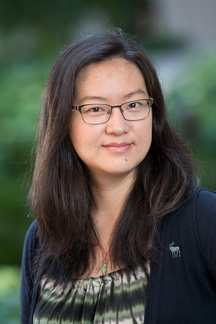
Lin Zhang, PhD
Biostatistician
zhan4800@umn.edu
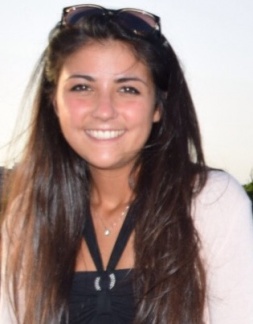
Sara Bottale
Research Assistant
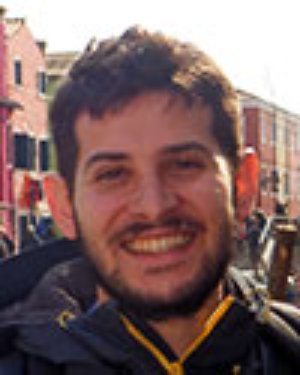
Daniele De Patre, PT
Research Assistant
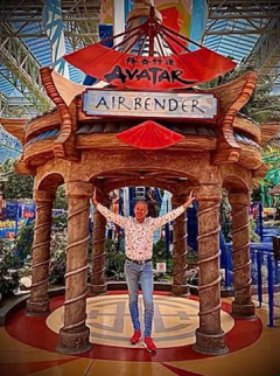
Marc Noël
Consultant
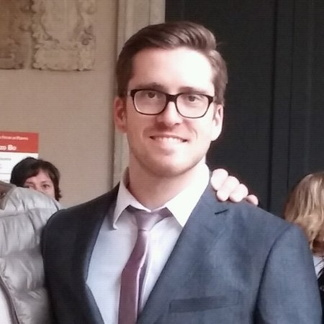
Marco Rigoni, DPT
Research Assistant

Marina Zernitz, DPT
International Collaborator
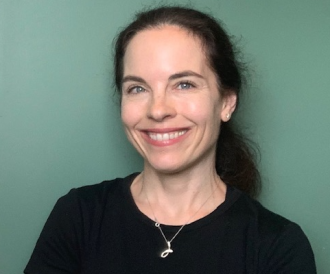
Jena Blackwood, PT, DPT
Volunteer
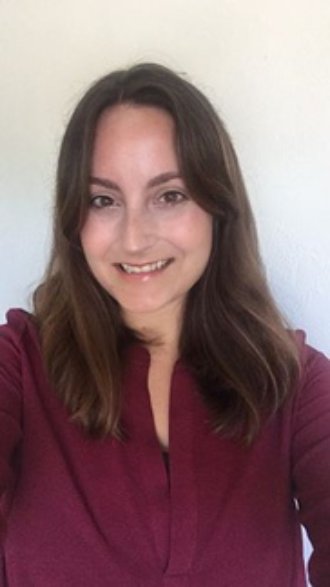
Sydney Carpentier, BA
PhD Student
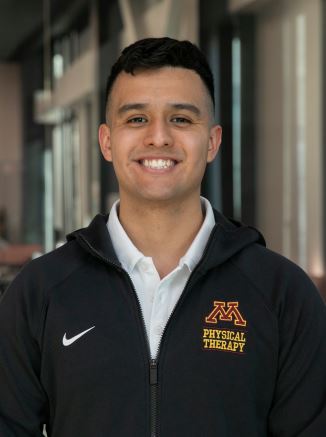
Juan Valdez
Student Research Assistant
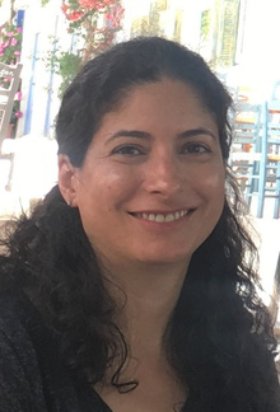
Annette Xenopoulos-Oddsson
Project Manager
xenop001@umn.edu
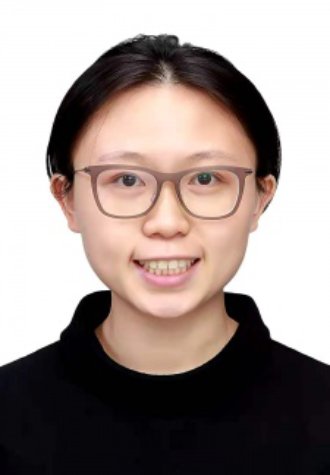
Wei Deng, BA
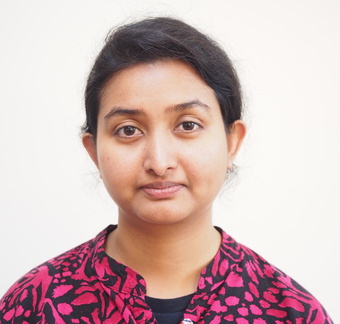
Tanjila Nawshin, MS, MBBS
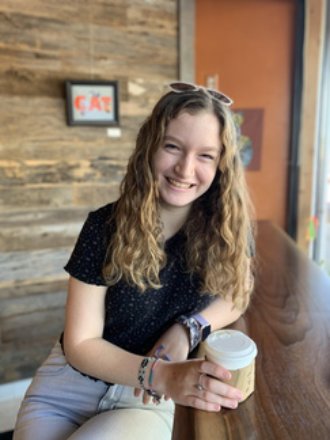
Juliana Tennant
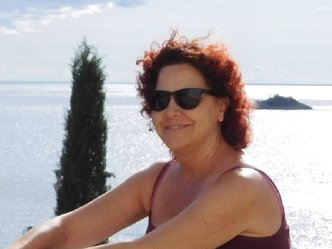
Carla Rizzello, MS, DPT

Casey Byron, BS, MPT, CCCE
Collaborator
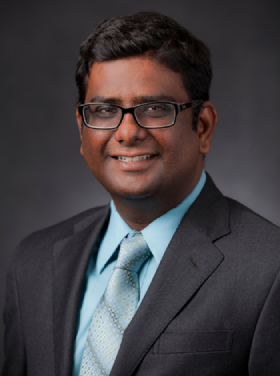
Bharathi Jagadeesan , MD
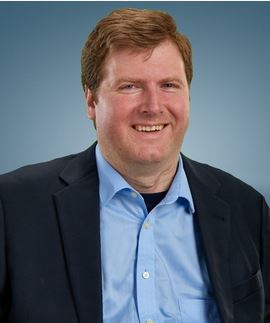
Robert Wudlick, BS
Recruitment Coordinator
rwudlick@umn.edu
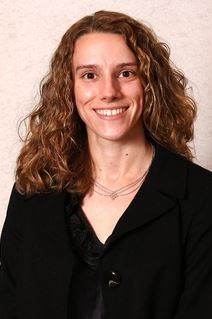
Lynne Gauthier, PhD
Collaborator
